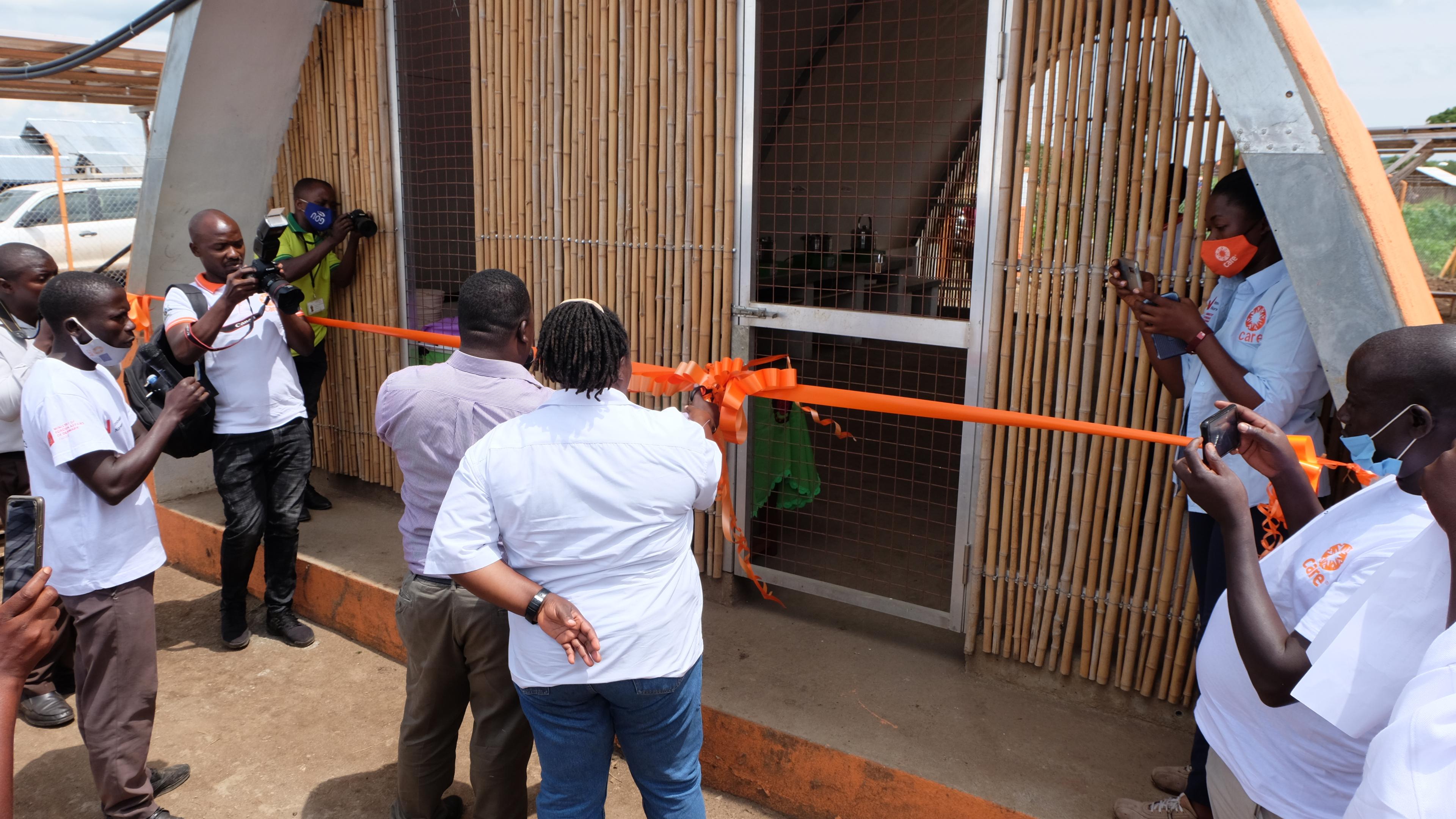Piloting the first sustainable refugee settlement, Camp+
 © CARE
© CAREScope of the project
The vision of CAMP+ is to create the most sustainable and ultimately climate positive refugee settlement in the world. The project responds to an urgent need to green humanitarian responses and address negative environmental consequences of protracted crises. Hosting refugees for sustained periods puts pressure on the host communities and their resources, including land, water, and forests, resulting in increased vulnerabilities and possible tension and conflict between hosts and refugees.
Therefore, the CAMP+ humanitarian innovation project applies a holistic approach that sought to include different elements such as natural resources management planning, waste management, sustainable cooking and energy use, and climate smart agriculture and food production systems, and consider the positive synergies between these. The project is located in Kyangwali refugee settlement in Uganda.
Lessons learned and next steps
During the pilot phase, the project tested various solutions in the camp including resource management, a plastic repurposing unit, solar-based community kitchens, sustainable food production and approaches for improved spatial planning. CAMP+ as a concept holds a lot of potential for scaling to other settlements in Uganda and beyond, and CARE is therefore continuing CAMP+ into a new phase, with the support from the HIP Norway Scaling Programme.
The project has maintained a holistic focus throughout the pilot phase, seeking to address several challenges at once and consider the positive synergies between solutions. The five intervention areas have focused on various forms of humanitarian innovation. Two of the solutions, the community kitchens and the plastic repurposing units are market-based product innovations that seek to develop viable social businesses. The other three solutions; sustainable food production, inclusive forest management and spatial planning are social innovations that seek to change current practices by demonstrating efficiencies and value creation for end users and other stakeholders. Hence, the routes to scale are expected to differ. Based on the initial tests, the project team believes that all five solutions have demonstrated potential, although still with limited data on user uptake. For spatial planning the demonstration was at a very small scale, and therefore inconclusive in terms of the practical adoption and related value creation. The other four solutions have demonstrated benefits but require a longer period of evidence to substantiate the proof of concept and transition to scale. There are very good indications of their ability to address the challenges described in ways that are both relevant and desirable for end-users.
Who are the project partners?
CARE Norway, CARE Denmark, CARE Uganda, Lendager Group, PESITHO, LLa Bioeconomy, SLA, Community Development Resource Network (CDRN), TakaTaka Plastics, Mottelson Consultancy, Lifeshelter.